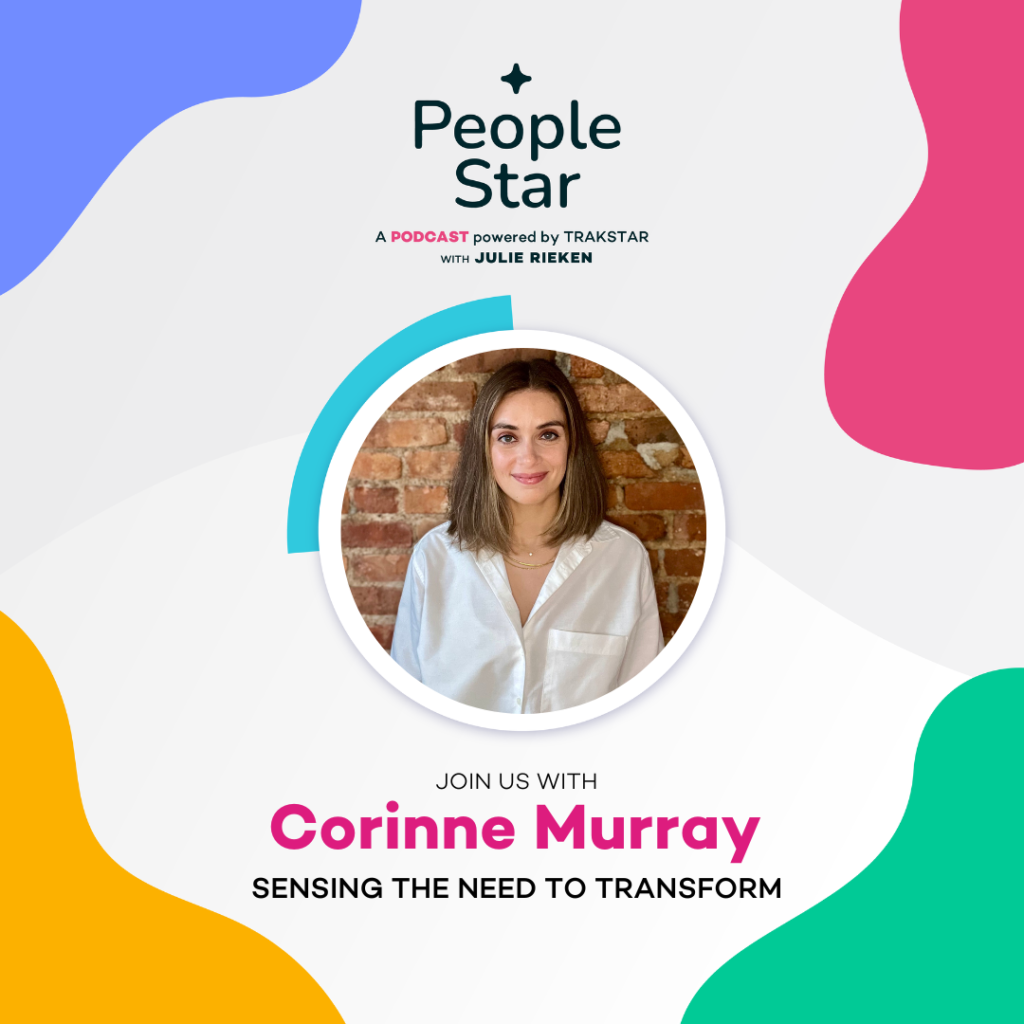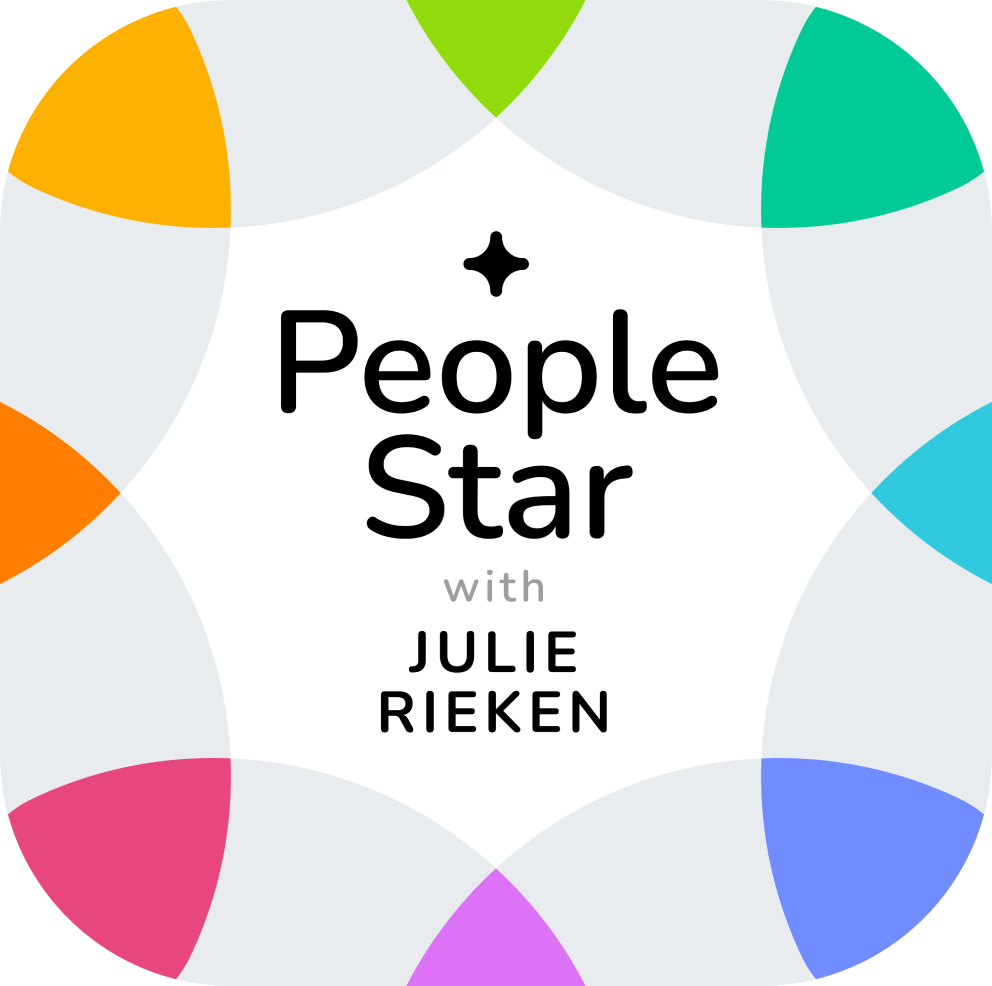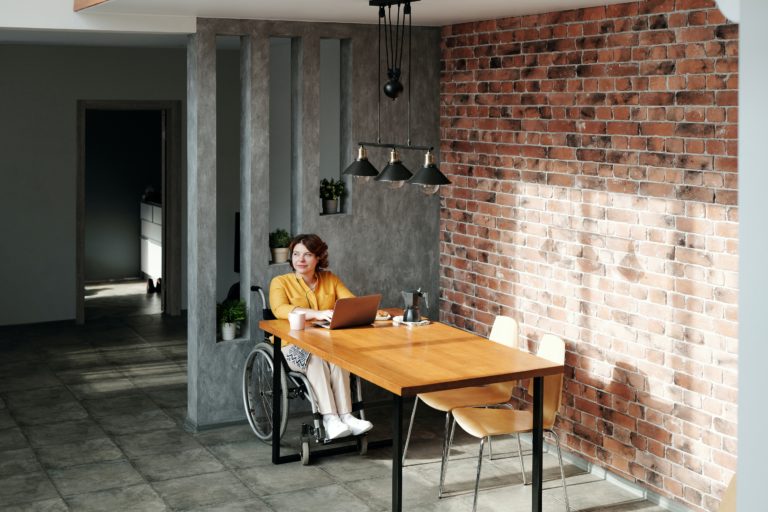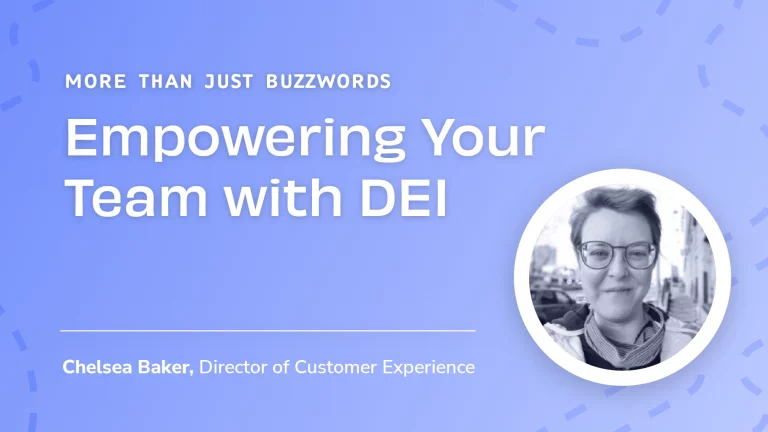PeopleStar_Corinne Murray: this mp3 audio file was automatically transcribed by Sonix with the best speech-to-text algorithms. This transcript may contain errors.
PeopleStar Intro/Outro:
Welcome to the PeopleStar Podcast. We deliver leadership perspectives from industry experts on their people, architecture, routines, and culture as they solve HR's newest challenges. And now your host, Julie Rieken.
Julie Rieken:
Hello podcast listeners. Julie Rieken, host of PeopleStar Podcast. Today, I'm really excited, I've got Corinne Murray with us. She works at Agate Studio and is a consultant with organizations that are looking to transform, and so many of our organizations are looking to transform today. So as we started our conversation, I was asking Corinne some questions that we're going to get to, but before we do, Corinne, introduce yourself and then we're going to thread in one of the coolest conversations that I've had.
Corinne Murray:
Hi, everyone. Corinne Murray I'm the founder and chief strategist of Agate Studio. Really just focused on, like Julie said, helping companies transform. We've been through two and a half years of major change and a lot of our structures and systems have yet to catch up. So that's where, I'm here to grease the wheels and get us into the future.
Julie Rieken:
I love it. So we started our conversation before, before the podcast with So companies are looking to transform. How do they know they need to transform? And you said, well, there's a lot of precipitating events, but one that, a thread that we've been hearing is a return to office failure.
Corinne Murray:
Yeah.
Julie Rieken:
That has things above it and below it, and that could be just one symptom of what's creating the need for transformation. I love that because I think a lot of our listeners will resonate with a return to office failure, it's complicated. Let's open the conversation here.
Corinne Murray:
Yeah, it's so funny because something that on the surface is a corporate strategy is deeply personal now, because for two and a half years we have, first we were forced and then we got used to and then we got comfy being our own agents of where we spend our time, when we do certain work, and now organizations are at this point, even though there have been probably, this is about the third iteration of big return to office mandate waves, this, post-Labor Day 2022, we've had a few others prior. But people are really bristling because it's a disruption to this pattern that has been ingrained over the past two years of I have my little rhythm, I mean, even for myself, like I wake up, I work in my beautiful apartment here in Brooklyn, I get myself coffee, I listen to a podcast, and then I go about my work. A lot of people are in a similar comfort zone of like, this is kind of lovely. But now businesses are, they're eager to get people back, they want that energy, they want to showcase their workplaces and have people back and have the buzz. But people are resistant because they've already found ways that remote work or distributed work actually works better. And companies are now being tasked because return to offices are not succeeding in the ways that they were hoping to get more specific about why you need to return to the office and not just why, because I said so. That's sort of what we're going through now, and I've used the analogy of it's kind of like a strict parent and a very rebellious teenager being like, I don't need to do anything you tell me. And now we need to get more into we're speaking to each other on the same level and organizations need to be able to say, we've done our homework, we know based on the research that we've seen and the sentiments of people across the organization, these kinds of activities, whether it be a workshop or onboarding or a company like, Town Hall, those are things that need to be in person. And here's why, we have all this data, there are studies about strong ties and weak ties, making sure that the people that aren't your immediate circle still have a meaningful connection to you because that's how work gets done and gets done productively. Or this is how information is shared best. We need to basically explain the case for the office for specific reasons.
Julie Rieken:
I think we do. Let's just talk about let's there's a couple of threads I'd like.
Corinne Murray:
Yeah. It's a lot there.
Julie Rieken:
Well, there is and this is a big topic today. So let's talk about what does a return to office failure look like? When somebody comes to you and says it's not working, what have they seen? What are the behaviors or why? How do they know that it's failing?
Corinne Murray:
Yeah, it's a good question. I think the best metrics to tell you that it's failing is simply is your badge access data telling you that there hasn't been that high of a climb in your occupancy. So like how many badges are swiping in at the lobby? So that's, that's probably like the lowest barrier of data to tell you what's needed, whether it's succeeding or not, and.
Julie Rieken:
… great data, right? That's a metric, it's math, it's irrefutable.
Corinne Murray:
It's irrefutable.
Julie Rieken:
I know that organizations are hearing things, too. What are they hearing yet that it's not working.
Corinne Murray:
They're probably hearing, hearing and also seeing, people coming in for what I'll call, like the honeymoon phase of like, let's call it 3 to 4 weeks where they'll come in and they'll do the dance as it's been asked, and then life will start to get in the way of we're in what would be the third week of this third pass of return to office. So I'm in New York, so the high holidays are going to take out a good chunk of people for Rosh Hashanah and Yom Kippur and the other holidays that follow. And then that's going to upset the balance of this rhythm that companies are trying to set. People aren't going to be in the office, and so, oh, if my team isn't here, what's the point of me being here? I'm just going to be sitting on Zoom calls all day. And so this is where companies are going to start to see the rubber hitting the road of simply because you say you want someone to be somewhere and not give them salient reasons for how it benefits them, they're going to eventually stop doing it.
Julie Rieken:
It's just going to deteriorate and kind of dwindle. And I'm thinking about the managers that would have to be the enforcers and nobody wants to be an enforcer.
Corinne Murray:
No, no one wants to be an enforcer, and middle managers always get the short end of the stick.
Julie Rieken:
And so we ask them to enforce everything.
Corinne Murray:
We ask them to enforce and monitor everything, mostly with not enough tools to actually oversee and to mandate that. And so my heart really goes out to those managers who are being asked to be those enforcers or be those overseers, because this is a, this is a top-down problem. As much as I love things that are unilateral and democratic, this is, executives need to walk the walk and talk the talk. So for all the mandates that they're giving their people, they also need to be following the same things. And you know that your executives, not everyone, but there's a large cohort who won't be in the office on a Friday because they're going to be at their, their weekend home or their beach home or wherever, or they'll be traveling midweek to be with a client. So all of these things interfere with what would be the theory around return to office.
Julie Rieken:
Totally. So, okay, let's play this out here. Company gives a return to office mandate, it's kind of failing, and when you were talking earlier, you said that systems and structures haven't evolved, and I loved one when we were talking about this. You said, hey, let's go back to what we knew, let's go back to the office. And so these mandates were just sort of a revert back to the last known good.
Corinne Murray:
Yeah, think of lobotomy.
Julie Rieken:
Yeah, that's, the last known good. Okay, well, that was good two and a half years ago. Okay, everybody come back, let's recreate what we had before. And what you're saying is that people have have changed and we've adapted, and we may go through a honeymoon phase. All right, I'll do this for a couple of weeks.
Corinne Murray:
Right.
Julie Rieken:
And then it starts to dwindle. How do you create something that transforms the business into what it's going to be for the future? What questions? When you're talking with someone, what questions do you ask? How do you get them into that next phase of evolution, to think about what that looks like? What do you do?
Corinne Murray:
Yeah, well, first I always start with where they currently are. So if they come to me and they say, We're trying to get people to come back to the office and it's not working. My, my first question is always, what is it that you're trying to solve for? And if the answer is in this case of ARTO, if the answer is just we want people back, I'm just going to keep asking why, why, why, why? Because all of those reasons are for the organization, not the benefit of the employee. And what's happened over these past two and a half years and already was brewing in the workplace and employee experience and culture space prior to the pandemic but has really come into its own is employees are consumers. Employees are consumers of your company brand. And so how do you make customers happy? First is do your research and figure out what their current situation is, where you can close gaps, where you can make things easy, and you start to build products like I'm, Agate's philosophy and my philosophy for many years has been stay in beta, treat everything that you're doing like it's product development. Because what we build for today, there's no guarantee that it will solve exactly for what we need in five years. Will it have the foundational blocks of what we can do? 100%. If it's set up properly, everything should be able to adapt and be reused over time. But you need to basically start from a configurable standpoint of what are the buckets that always need to be solved for. Typically when it comes to employee experience, workplace and culture, it's the environments, those are both digital and physical. What are the tools you need? What are the norms you need to develop and announce both in overt and more quiet ways. So overtly, in more quiet ways. And then what are the systems to capture data that tells you how it's working, what's broken, what needs, what needs to be evolved, or what is completely missing that needs to be developed. So if you sort of put everything that we need to do in this framework of product development, it kind of becomes a bit of a flywheel. It's all very scientific when you think about it from that framework perspective.
Julie Rieken:
I love this stay in beta idea because you mentioned it, we're on the third iteration, the post-Labor Day 2022.
Corinne Murray:
Yeah, we are. Yeah.
Julie Rieken:
What does it even look like? Stay in beta so that we're ready. You know, you did mention a couple of things as we were talking earlier that I thought, that helped me get down to the tactical level of what does it mean to stay in beta? How do we experiment with some of these ideas? And I know you have many ideas, not just return to work ideas.
Corinne Murray:
Yes.
Julie Rieken:
We started pulling this thread and it's of interest. Can you tell me a little bit more about some of the things you've thought about, like how what are some variations on return to office? What are some variations, some ways that people could think about this that allow them a bit of a permeable place to stay in beta? You have some specific examples and they were valuable to me, I know they'll be valuable to listeners.
Corinne Murray:
Yeah. So the idea really about staying in beta is just figuring out what is the core problem, because the problem typically stays the same, the resolution is what will constantly be an iteratable thing. So the way that we solve for getting people back to the office other than just I'm the company and I'm the executive and I say so is we want people to come back to the office because we learned through all of this data that workshops happen better in person if you have more than five people, or we believe that having our weak ties throughout our organization and if you're not familiar with the strong ties-weak ties research, I highly recommend reading about it, it's very prescient for HR folks, real estate and workplace folks right now. We've done our homework and here's, we are presenting you, our employees, with why these are the best courses of action. But we want to hear from you in your practical application. Does our research hold water? If not, tell us why and then we'll figure out how we can iterate and improve this model or this philosophy as we go on. So even just an RTO can be transformed by staying in beta by saying these are the reasons or these are the activities that should be bringing you back to the office, It's not every day, it might not even be every week, but here's the formula of one-on-ones workshops, regular meetings and heads down time and you get to, with your team, architect your schedule based on our standards that we've designed. And then, you know, just continuing on with, it's really you stay in beta by asking your people and treating them like the customers that they are.
Julie Rieken:
Employees are customers and consumers, …. the products, stay in beta. Corinee, this has been fascinating because I've been thinking about the return to office and it's hard and we are in multiple iterations and the idea to stay in beta.
Corinne Murray:
Yeah.
Julie Rieken:
So smart.
Corinne Murray:
Yeah. Like assume, you can only know what you know in the current moment and having the humility to say, okay, this didn't work. Back to the drawing board, which is, the drawing board is usually where I come in. So if you feel like you're getting toward the drawing board, you can come find me. And it's really just about forward motion.
Julie Rieken:
I love it. So you all, Corinne Murray, Agate Studio, not only will you help organizations transform, this is but one of the pillars that you can help people think about. And oftentimes I know that these things, like the return to office that we talked about today, has broader implications across the whole organization. So I know you solve for a lot of things, not just this, but I really appreciate you indulging us in this specific one because it is.
Corinne Murray:
It's so prescient right now.
Julie Rieken:
It is!
Corinne Murray:
Yeah. At the end of the day, I think everything that, listeners, and I, and you, we're all trying to solve for is mitigating the unnecessary attrition that companies are facing. And there's a ton of it. You know, there are always going to be people who leave their jobs when they are ready or they've gotten what they've needed and it's time for them to move on. But people leaving because there are in good systems or the flexibility doesn't work for them or whatever the case may be. Those are things that can be avoidable if they're messaged and brought out into the organization in a way that is iterative and responsive to the people. If it's so rigid, that's usually what people react to and say, I'm out, I need to just leave. The goal is to reduce those risk points for everyone.
Julie Rieken:
Oh, I love that, because you're absolutely right. I'm not going to repeat it, you said. Thank you, Corinee. This has been a delight. Thanks for being a guest.
Corinne Murray:
Thank you so much. This is so much fun.
PeopleStar Intro/Outro:
Thanks for listening to the PeopleStar Podcast. For the show notes, transcript, resources, and more ways to get a seat at the table, visit us at TrakStar.com/Podcast.
Sonix has many features that you’d love including share transcripts, automated translation, advanced search, secure transcription and file storage, and easily transcribe your Zoom meetings. Try Sonix for free today.




